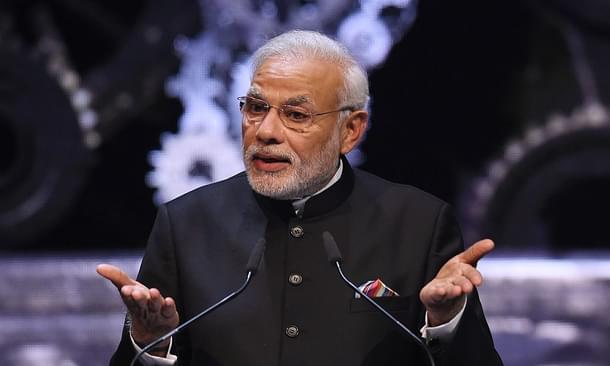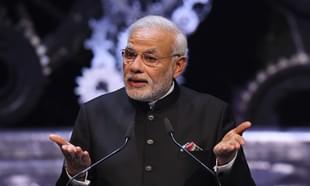Economy
Moody’s Endorses Modi’s Reforms, Upgrades India’s Credit Rating From Baa3 To Baa2
Swarajya Staff
Nov 17, 2017, 08:06 AM | Updated 08:06 AM IST
Save & read from anywhere!
Bookmark stories for easy access on any device or the Swarajya app.


Moody’s Investors Service, the bond credit rating business of American business and financial services company Moody’s Corporation has upgraded the Government of India's local and foreign currency issuer ratings to Baa2 from Baa3 and changed the outlook on the rating to stable from positive. India's local currency senior unsecured rating has also been upgraded to Baa2 from Baa3 and its short-term local currency rating from P-3 to P-2.
India's long-term foreign-currency bond ceiling has been upgraded to Baa1 from Baa2 as well as the long-term foreign-currency bank deposit ceiling to Baa2 from Baa3. Whle the short-term foreign-currency bond ceiling is left unchanged, the short-term foreign-currency bank deposit ceiling has been upgraded to P-2 from P-3.
This is a resounding endorsement of Narendra Modi government’s reformist credentials. This is first upgrade for India in 10 years with last coming in 2007. However, Moody’s last upgraded India in 2004 just before the general elections.
Giving the rationale behind the upgrade, Moody’s notes that the reforms carried out by the government will advance the government's objective of improving the business climate, enhancing productivity, stimulating foreign and domestic investment, and ultimately fostering strong and sustainable growth.
It states that the Goods and Services Tax (GST) will promote productivity by removing barriers to interstate trade. Improvements to the monetary policy framework has also been factored in. The central bank’s and the government’s measures to address the overhang of non-performing loans (NPLs) in the banking system are also positive as well as the measures introduced to reduce the informality in the economy such as demonetization, the Aadhaar system of biometric accounts and targeted delivery of benefits through the Direct Benefit Transfer (DBT) system.
Noting that India’s growth potential is ‘significantly higher than most other Baa-rated sovereigns’, Moody’s said that it expects real GDP growth to moderate to 6.7 per cent in the fiscal year ending in March 2018 (FY2017) and to 7.5 per cent in FY2018, with similarly robust levels of growth from FY2019 onward.
On public indebtedness, Moody’s said that though this is India’s principle credit weakness, it will remain stable ‘even in the event of shocks, and will ultimately decline.’
One year after demonetisation, former Prime Minister Manmohan Singh commented that he fears the undermining of India’s institutions but Moody’s, which weighs facts rather than sentiments, said that Modi government’s reforms will continue to strengthen India’s institutional framework. ‘Government efforts to reduce corruption, formalize economic activity and improve tax collection and administration, including through demonetization and GST, both illustrate and should contribute to the further strengthening of India's institutions,’ it noted.
Seconding other reforms by the government such as recent announcement to recapitalise the public sector banks and Bankruptcy and Insolvency Act, Moody’s noted that these reforms are beginning to address a key weakness in India's sovereign credit profile.
The institution has suggested that implementing key pending reforms on labour and land front can further help it upgrade one notch.




